A Simple Mathematical Model to Predict the Pressure Drop for Transport of Deformable Particles in Homogeneous Porous Media
Abstract
1. Introduction
2. Modeling TDPs as a Time Pressure-Dependent Complex Fluid
2.1. Unsteady TDP Case
2.2. Steady TDP Case
3. Application of the Model on Preformed Particle Gel (PPG) Flowing Through a Porous Medium
3.1. Unsteady-State TDP Case
3.2. Steady-State TDP Case
4. Conclusions
Author Contributions
Funding
Data Availability Statement
Conflicts of Interest
References
- Bai, B.; Liu, Y.; Coste, J.; Li, L. Preformed Particle Gel for Conformance Control: Transport Mechanism Through Porous Media. SPE Reserv. Eval. Eng. 2007, 10, 176–184. [Google Scholar] [CrossRef]
- Lebleu, N.; Roques, C.; Aimar, P.; Causserand, C. Role of the cell-wall structure in the retention of bacteria by microfiltration membranes. J. Membr. Sci. 2009, 326, 178–185. [Google Scholar] [CrossRef]
- Zinchenko, A.; Davis, R. Emulsion flow through a packed bed with multiple drop breakup. J. Fluid Mech. 2013, 725, 611–663. [Google Scholar] [CrossRef]
- Bai, B.; Huang, F.; Liu, Y.; Seright, R.S.; Wang, Y. Case Study of Preformed Particle Gel for in-depth Fluid Diversion. In Proceedings of the SPE/DOE Symposium on Improved Oil Recovery, Tulsa, OK, USA, 20–23 April 2008. [Google Scholar] [CrossRef]
- Feng, Y.; Guo, W.; Hu, L.; Yi, X.; Tang, F. Application of Hydrogels as Sustained-Release Drug Carriers in Bone Defect Repair. Polymers 2022, 14, 4906. [Google Scholar] [CrossRef] [PubMed]
- Yao, C.J.; Wang, D.; Wang, J.; Hou, J.; Lei, G.L.; Steenhuis, T.S. Effect of Ionic Strength on the Transport and Retention of Polyacrylamide Microspheres in Reservoir Water Shutoff Treatment. Ind. Eng. Chem. Res. 2017, 56, 8158–8168. [Google Scholar] [CrossRef]
- Goudarzi, A.; Zhang, H.; Varavei, A.; Taksaudon, P.; Hu, Y.P.; Delshad, M.; Bai, B.; Sepehrnoor, K. A Laboratory and Simulation Study of Preformed Particle Gels for Water Conformance Control. Fuel 2015, 140, 502–513. [Google Scholar] [CrossRef]
- Imqam, A.; Bai, B.; Delshad, M. Preformed Particle Gel Propagation Through Super-K Permeability Sand and Its Resistance to Water Flow During Conformance Control. In Proceedings of the SPE/IATMI Asia Pacific Oil & Gas Conference and Exhibition, Nusa Dua, Bali, Indonesia, 20–22 October 2015. [Google Scholar] [CrossRef]
- Wang, J.; Zhang, H.; Liu, H.; Zhao, W.; Liu, H.; Yao, C.; Zheng, J.; Shen, Y. Quantification of Transportation of Deformable Gel Particles in Porous Media. In Proceedings of the SPE Annual Technical Conference and Exhibition, San Antonio, TX, USA, 9–11 October 2017. [Google Scholar] [CrossRef]
- Li, S.; Yu, H.H.; Fan, J. Modeling Transport of Soft Particles. Phys. Rev. E 2021, 104, 025112. [Google Scholar] [CrossRef] [PubMed]
- Bai, B.; Li, L.; Liu, Y.; Liu, H.; Wang, Z.; You, C. Preformed Particle Gel for Conformance Control: Factors Affecting its Properties and Applications. SPE Reserv. Eval. Eng. 2007, 10, 415–422. [Google Scholar] [CrossRef]
- Imqam, A.; Goudarzi, A.; Delshad, M.; Bai, B. Development of a Mechanistic Numerical Simulator for Preformed Particle Gel Applications in Non-Crossflow Heterogeneous Reservoirs. In Proceedings of the SPE Annual Technical Conference and Exhibition, Houston, TX, USA, 28–30 September 2015. [Google Scholar] [CrossRef]
- Imqam, A.; Bai, B. Optimizing the Strength and Size of Preformed Particle Gels for Better Conformance Control Treatment. Fuel 2015, 148, 178–185. [Google Scholar] [CrossRef]
- Wang, J.; Liu, H.; Wang, Z.; Xu, J.; Yuan, D. Numerical simulation of preformed particle gel flooding for enhancing oil recovery. J. Pet. Sci. Eng. 2013, 112, 248–257. [Google Scholar] [CrossRef]
- Liu, Y.; Hou, J.; Wang, Q.; Liu, J.; Guo, L.; Yuan, F.; Zhou, K. Flow of Preformed Particle Gel through Porous Media: A Numerical Simulation Study Based on the Size Exclusion Theory. Ind. Eng. Chem. Res. 2017, 56, 2840–2850. [Google Scholar] [CrossRef]
- Wang, J.; Liu, H.Q.; Zhang, H.l.; Sepehrnoori, K. Simulation of deformable preformed particle gel propagation in porous media. AIChE J. 2017, 63, 4628–4641. [Google Scholar] [CrossRef]
- Zhou, K.; Hou, J.; Sun, Q.; Guo, L.; Bing, S.; Du, Q.; Yao, C. An efficient LBM-DEM simulation method for suspensions of deformable preformed particle gels. Chem. Eng. Sci. 2017, 167, 288–296. [Google Scholar] [CrossRef]
- Imqam, A.; Bai, B.; Delshad, M. Micro-Particle Gel Transport Performance through Unconsolidated Sandstone and its Blocking to Water Flow During Conformance Control Treatments. Fuel 2018, 231, 479–488. [Google Scholar] [CrossRef]
- Farasat, A.; Younesian-Farid, H.; Sadeghnejad, S. Conformance control study of preformed particle gels (PPGS) in mature waterflooded reservoirs: Numerical and experimental investigations. J. Pet. Sci. Eng. 2021, 203, 108575e108588. [Google Scholar] [CrossRef]
- Coelho, R.C.V.; Silva, D.P.F.; Maschio, A.M.R.; da Gama, M.M.T.; Araújo, N.A.M. Collective transport of droplets through porous media. Phys. Fluids 2023, 35, 013304. [Google Scholar] [CrossRef]
- Chen, X.; Li, Y.; Liu, Z.; Zhang, J.; Trivedi, J.; Li, X. Experimental and theoretical investigation of the migration and plugging of the particle in porous media based on elastic properties. Fuel 2023, 332, 126224. [Google Scholar] [CrossRef]
- Barus, C. Note on the Dependence of Viscosity on Pressure and Temperature. Proc. Am. Acad. Arts Sci. 1891, 27, 13–18. [Google Scholar] [CrossRef]
- O’Connell, M.G.; Lu, N.B.; Browne, C.A.; Datta, S.S. Cooperative Size Sorting of Deformable Particles in Porous Media. Soft Matter 2019, 15, 3620–3626. [Google Scholar] [CrossRef] [PubMed]
- Di Felice, R.; Foscolo, P.U.; Gibilaro, L.G.; Rapagna, S. The Interaction of Particles with a Fluid-Particle Pseudo-Fluid. Chem. Eng. Sci. 1991, 46, 1873–1877. [Google Scholar] [CrossRef]
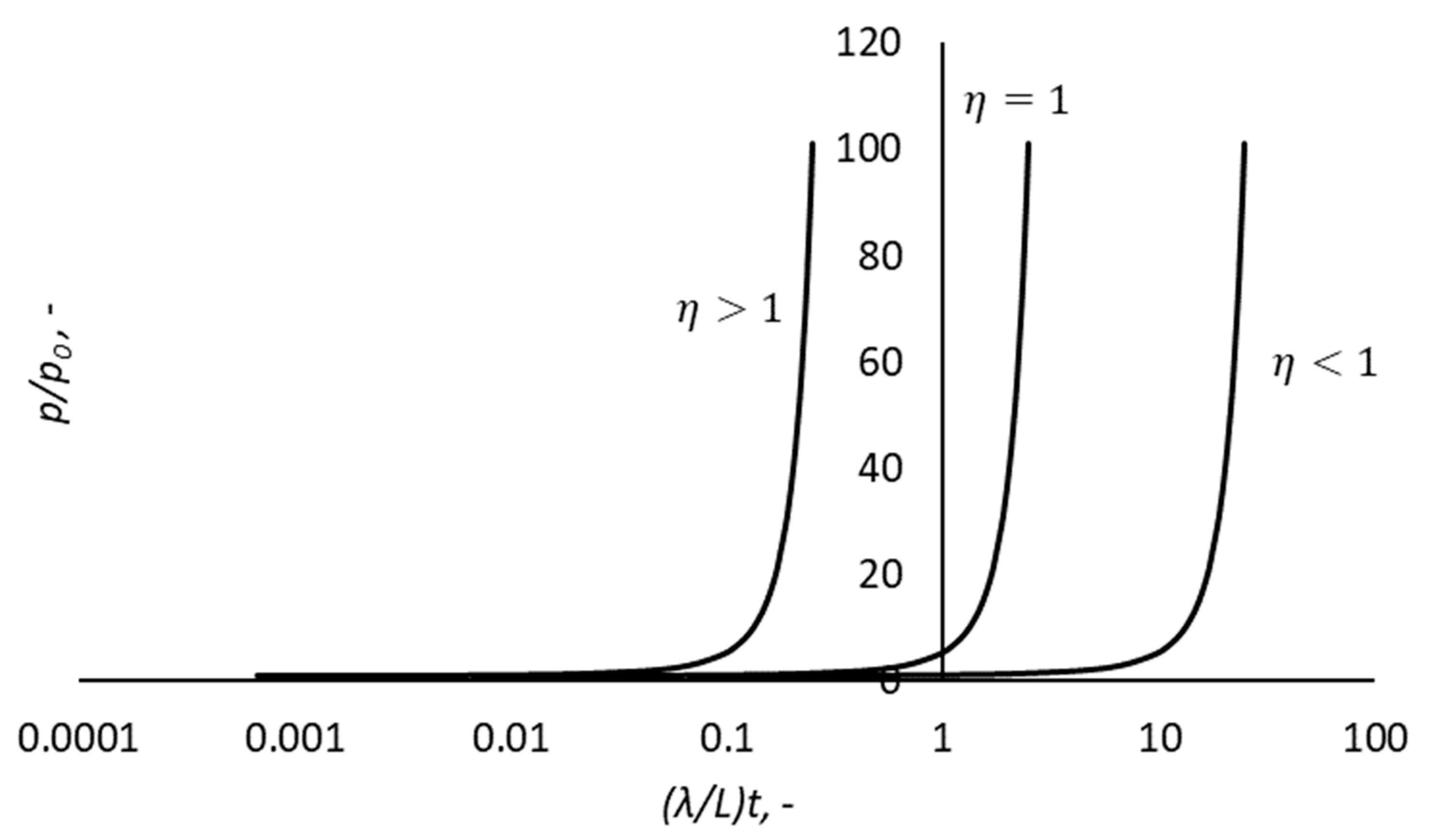
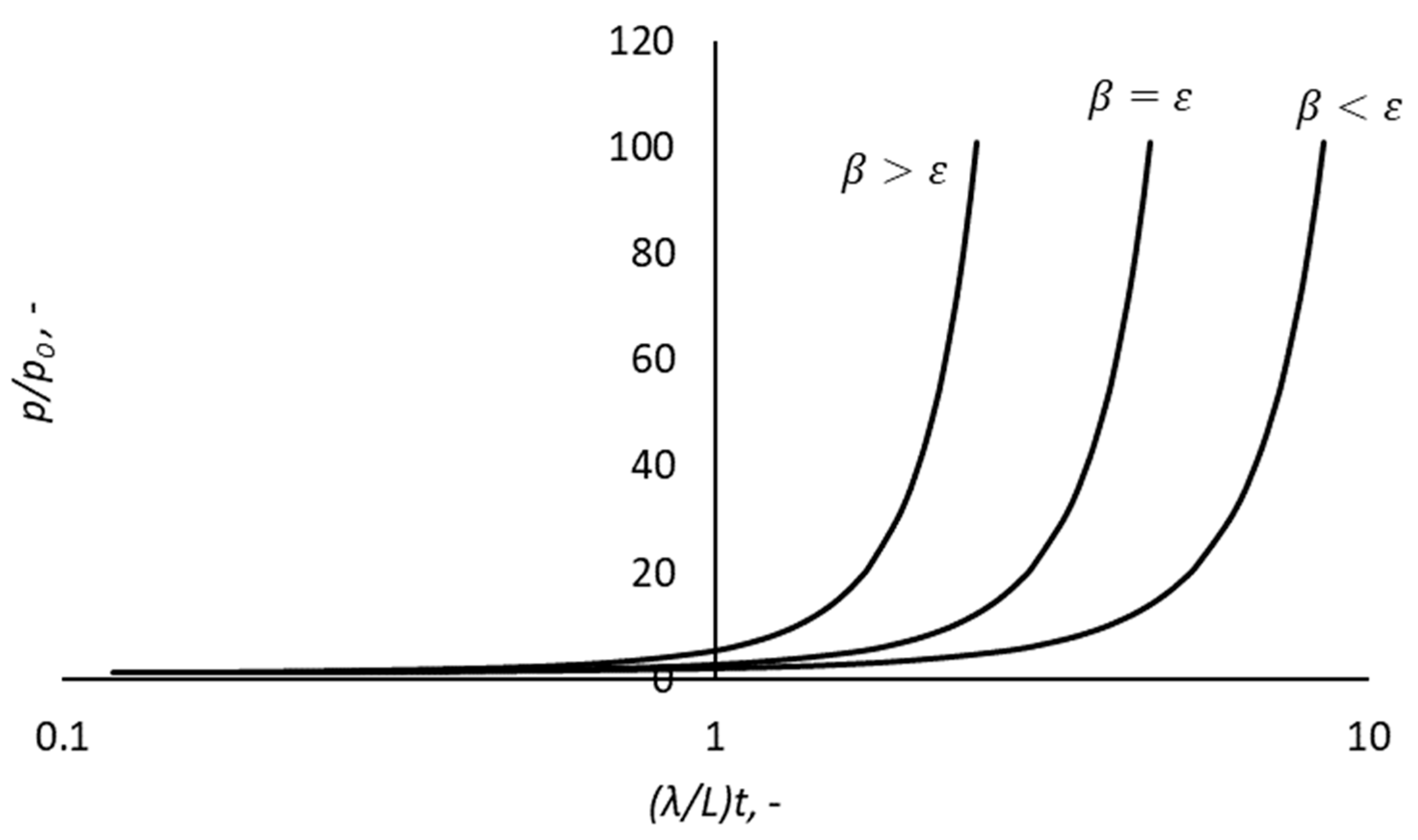
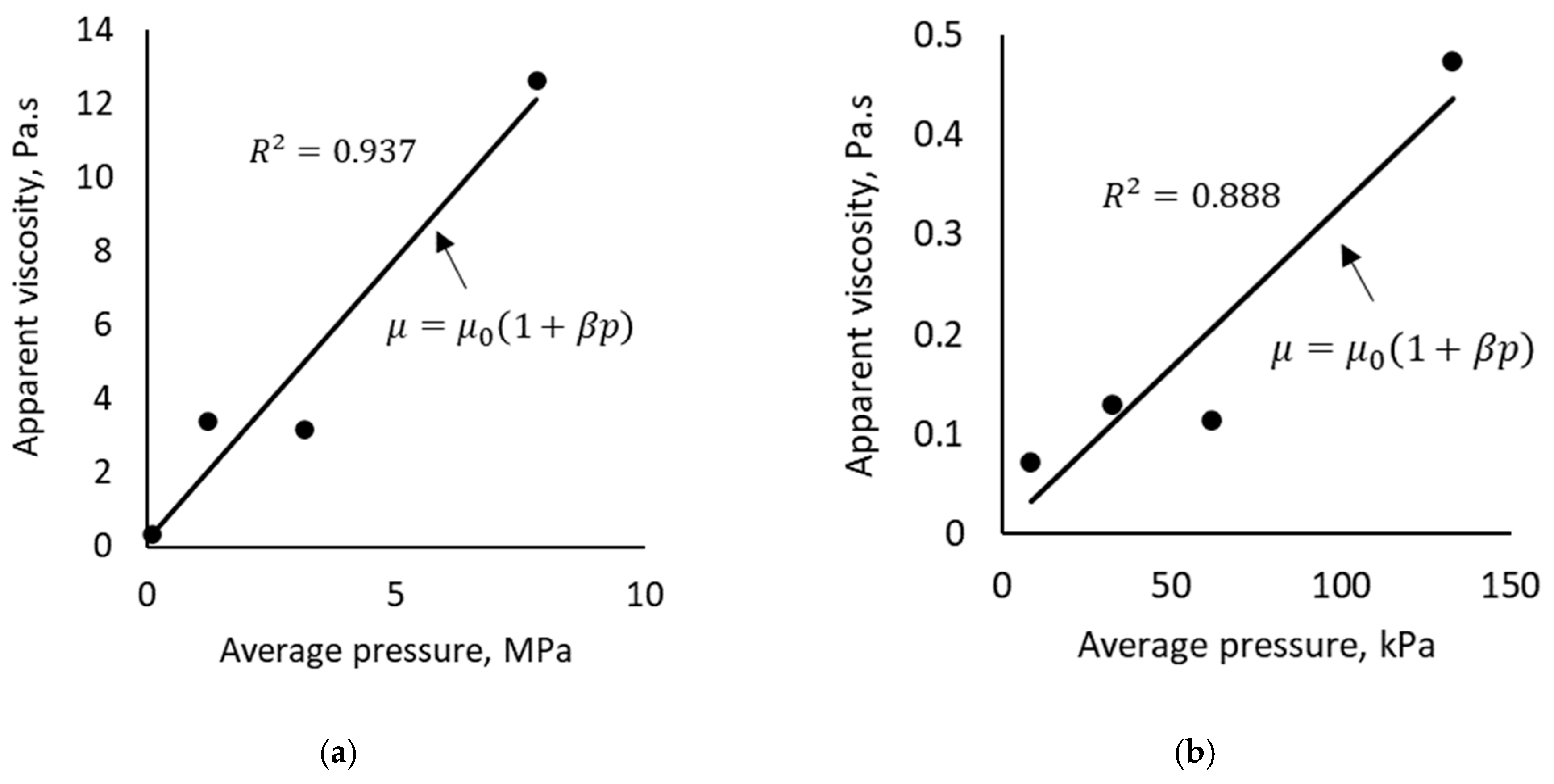
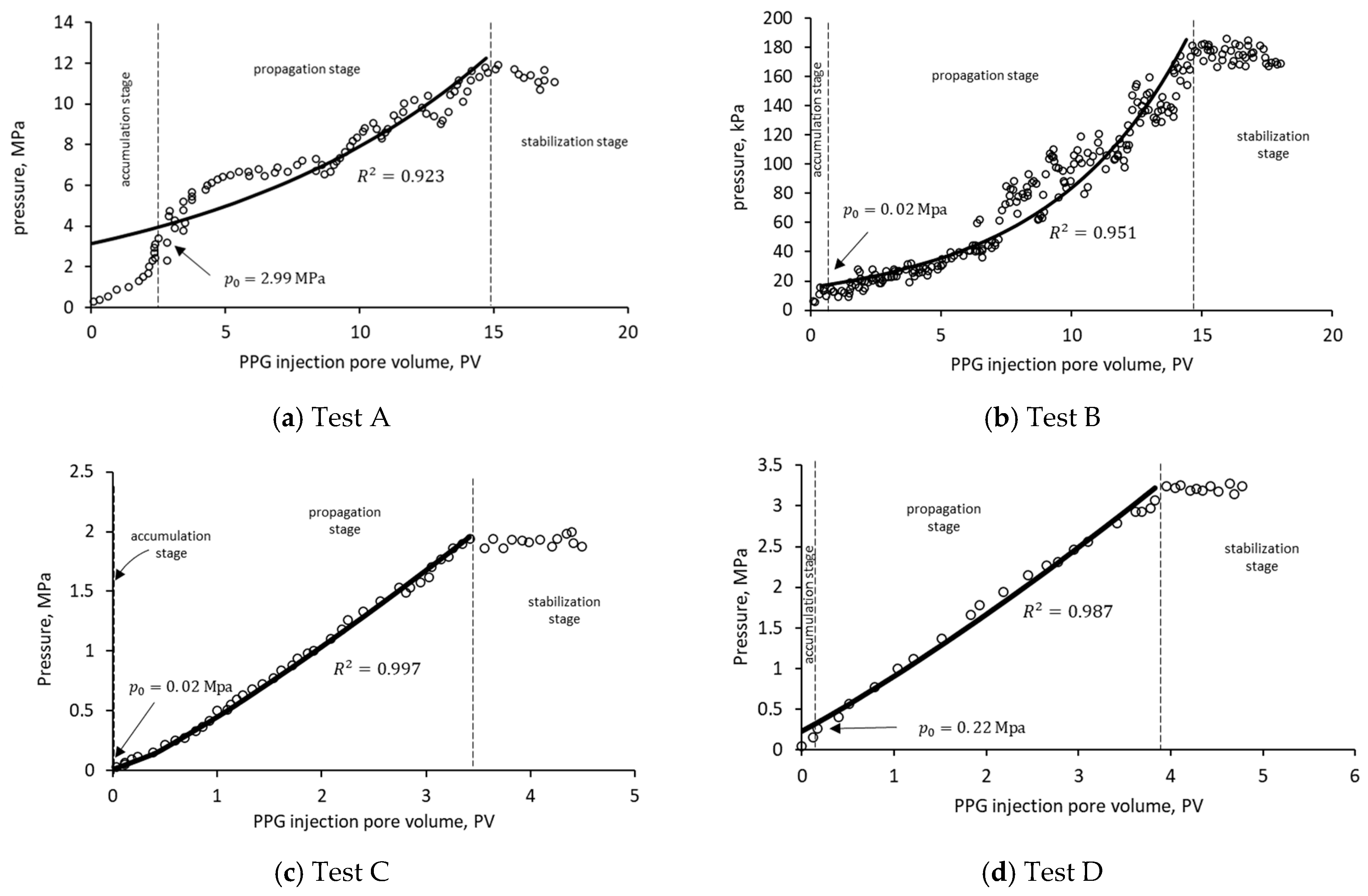
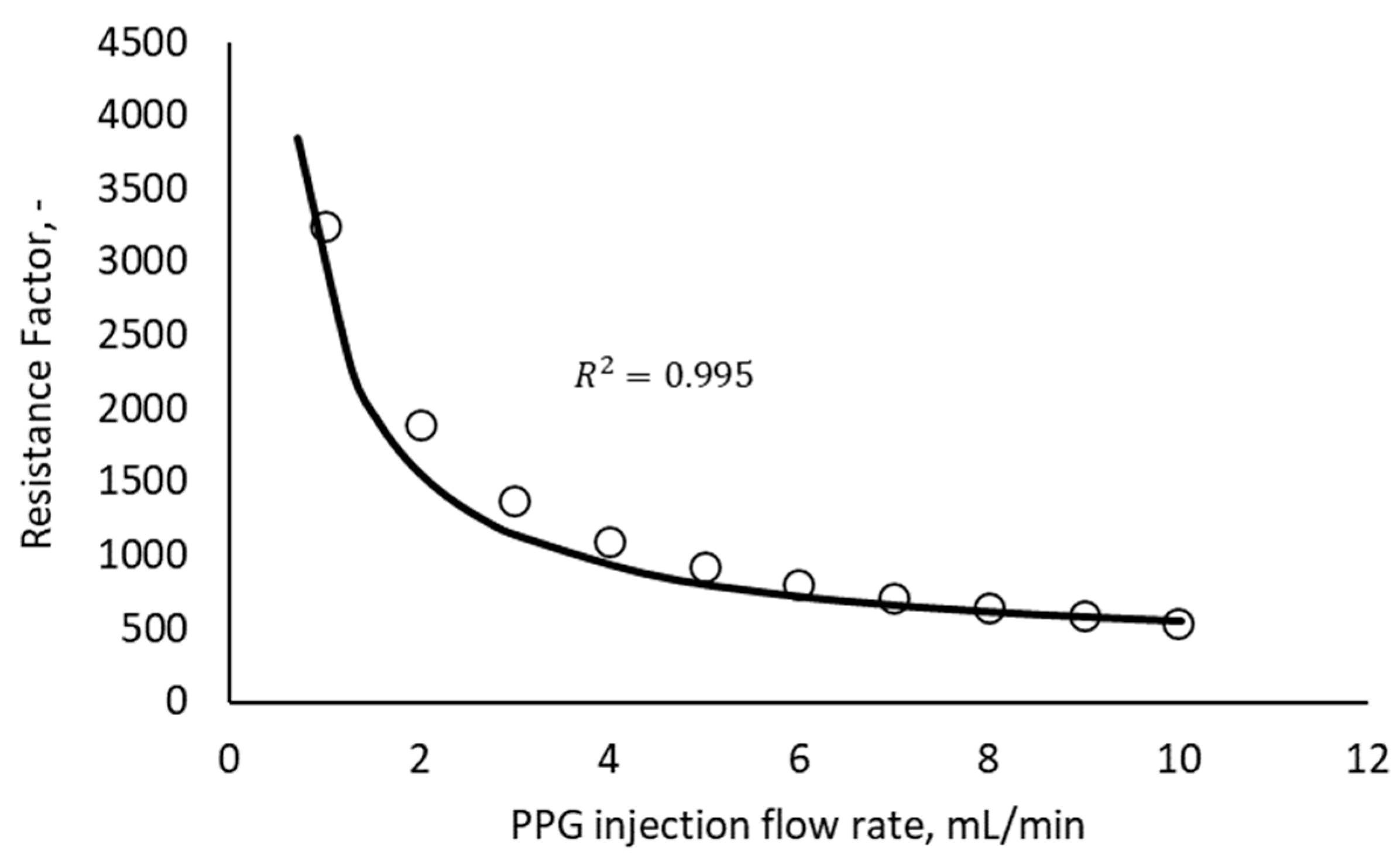
| Property | Imqam et al. [18] | Wang et al. [9] | ||
|---|---|---|---|---|
| Test A | Test B | Test C | Test D | |
| (1), m2 | 26.2 × 10−10 | 65.4 × 10−10 | 43.1 × 10−10 | 38.2 × 10−10 |
| (1), - | 0.39 | 0.39 | 0.31 | 0.32 |
| (1), Pa.s | 0.228 | 8.526 | ||
| (1), m/s | 3.62 × 10−6 | 43.5 × 10−6 | 27.2 × 10−6 | |
| (2), Pa−1 | 4.93 × 10−6 | 19.74 × 10−6 | ||
| (1), Pa−1 | 6.61 × 10−6 | 9.52 × 10−8 | ||
| (1), MPa | 2.99 | 0.01 | 0.02 | 0.22 |
| (1), μm | 205.5 | 130.0 | 268.5 | |
| (1), μm | 23.3 | 36.6 | 33.1 | 30.9 |
| (2), - | 2.0 | 0.04 | 0.06 | |
| (1), Pa | 870 | 2200 | ||
| (2), - | 0.35 | |||
| (1), kg/m3 | 1.0 × 103 | |||
Disclaimer/Publisher’s Note: The statements, opinions and data contained in all publications are solely those of the individual author(s) and contributor(s) and not of MDPI and/or the editor(s). MDPI and/or the editor(s) disclaim responsibility for any injury to people or property resulting from any ideas, methods, instructions or products referred to in the content. |
© 2024 by the authors. Licensee MDPI, Basel, Switzerland. This article is an open access article distributed under the terms and conditions of the Creative Commons Attribution (CC BY) license (https://creativecommons.org/licenses/by/4.0/).
Share and Cite
Matías-Pérez, V.; López-Ramírez, S.; Franco-Urresti, E.; Aguilar-Madera, C.G. A Simple Mathematical Model to Predict the Pressure Drop for Transport of Deformable Particles in Homogeneous Porous Media. Fluids 2024, 9, 275. https://doi.org/10.3390/fluids9120275
Matías-Pérez V, López-Ramírez S, Franco-Urresti E, Aguilar-Madera CG. A Simple Mathematical Model to Predict the Pressure Drop for Transport of Deformable Particles in Homogeneous Porous Media. Fluids. 2024; 9(12):275. https://doi.org/10.3390/fluids9120275
Chicago/Turabian StyleMatías-Pérez, Víctor, Simón López-Ramírez, Elizbeth Franco-Urresti, and Carlos G. Aguilar-Madera. 2024. "A Simple Mathematical Model to Predict the Pressure Drop for Transport of Deformable Particles in Homogeneous Porous Media" Fluids 9, no. 12: 275. https://doi.org/10.3390/fluids9120275
APA StyleMatías-Pérez, V., López-Ramírez, S., Franco-Urresti, E., & Aguilar-Madera, C. G. (2024). A Simple Mathematical Model to Predict the Pressure Drop for Transport of Deformable Particles in Homogeneous Porous Media. Fluids, 9(12), 275. https://doi.org/10.3390/fluids9120275







